When it comes to June, many people probably think of Japan as being hot and humid, which can be quite unpleasant. Yes, that’s correct. Since ancient times, the Japanese have lived in harmony with nature and weather. And that way of living has passed down till now and still remained in our daily traditions. With the rise of nuclear families and the convenience of modern society, unfortunately, many Japanese people are now becoming unaware of these traditions.Therefore, I’d like not only foreigners but also Japanese people to learn about them. And today, I’ll pick this topic: “When we think of June…”
Hydrangea
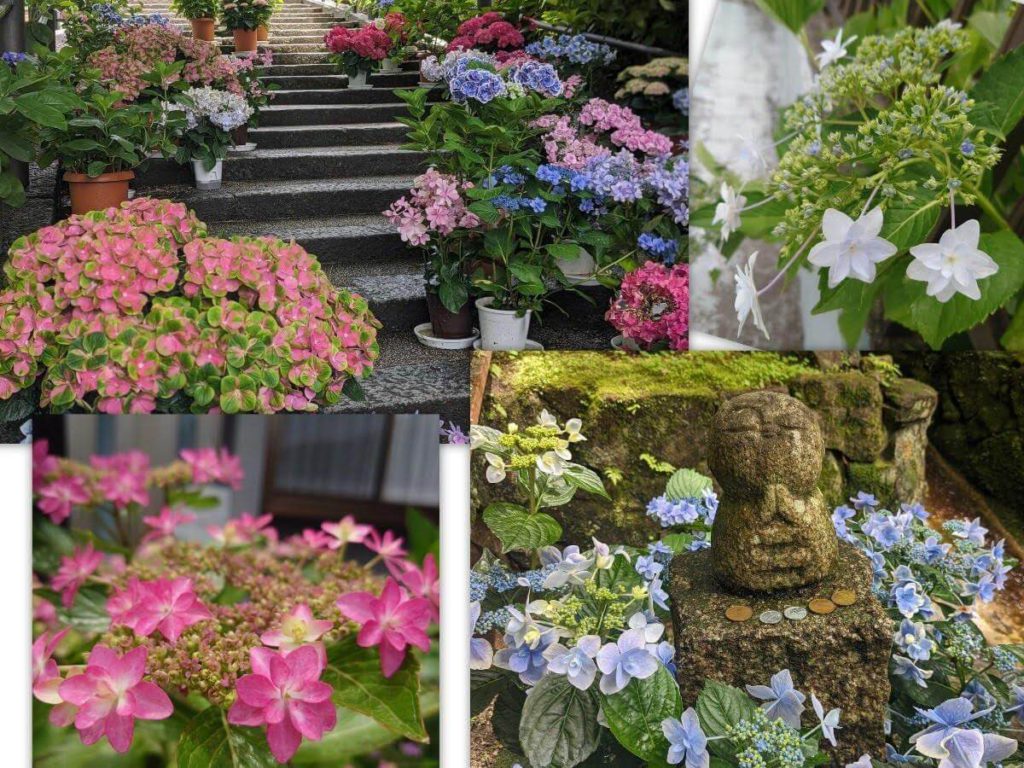
The first thing that comes to our mind is a flower, the hydrangea. How familiar are you with them? In fact, hydrangeas are native to Japan. The original Japanese hydrangeas are called “lace-cap hydrangea”, ガクアジサイ: gakuajisai, which is an original species. They were taken to Europe where it was cultivated and developed into the round, full-bloomed hydrangeas we see today. There are varieties of shapes and colors, and during the rainy season, the hydrangeas bloom beautifully and make people captivated and happy. In my opinion, the combination of rain and hydrangeas is the most pleasant scenery of this unpleasant humid season..
◎Amulet of hydrangea

Since ancient times, it has been said that hanging hydrangeas upside down wards off evil spirits, prevents misfortune, and brings happiness. So at home, you wrap the hydrangea in Japanese paper and tie it with red and white mizuhiki (traditional decorative cord). Days with the number 6 in June (the 6th, 16th, and 26th), especially June 26th, is considered the most effective day to practice this tradition. They have different effects depending on where they are hung. Hanging an upside-down hydrangea at the entrance or under the eaves is believed to bring financial luck and serve as a protective amulet against misfortune and evil spirits. Hanging it in the toilet is said to prevent illnesses specific to women, and for men, it is believed to improve male-specific issues. It is also said to prevent problems in old age related to such illnesses. The efficacy of this hydrangea charm lasts for one year, similar to amulets from shrines and temples. And it should be replaced on a day with the number 6 in June of the following year.
Ume (梅) :plum
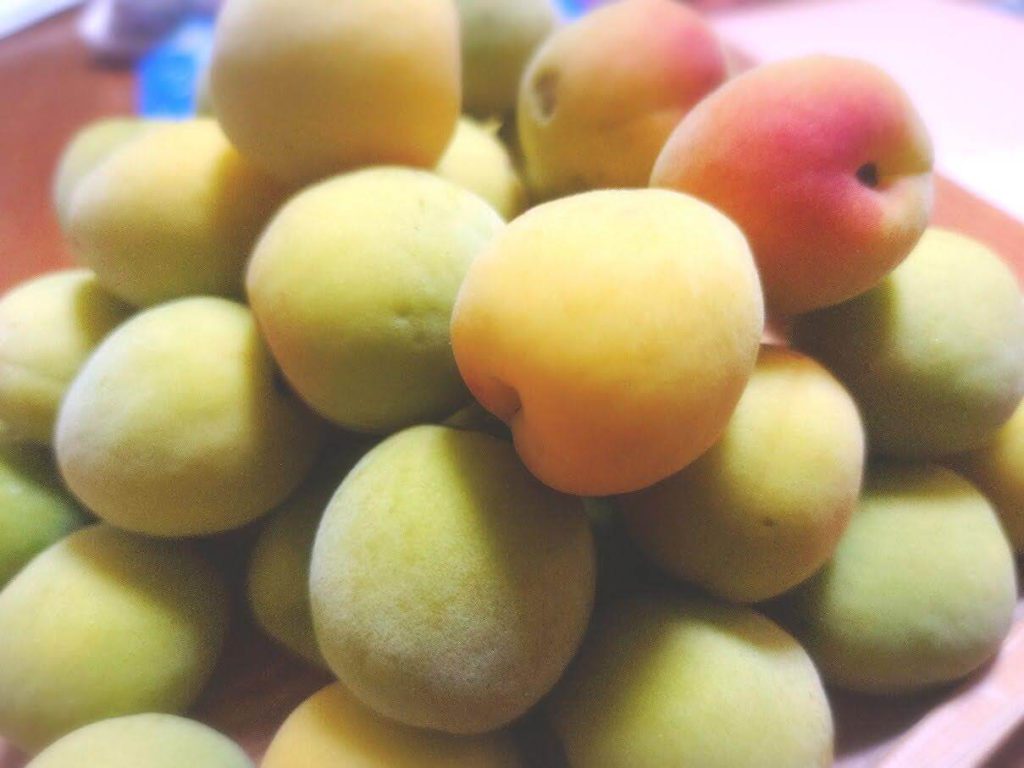
In Japan, the rainy season is called tsuyu (つゆ) and written as “梅雨”. That literally means rain of plums. The word “tsuyu” was introduced to Japan from China during the Edo period. One theory why the kanji “ume (梅)” is used in “tsuyu” suggests that because it is the rain that falls when plums are ripening. During this season, plums have always been closely associated with various aspects of Japanese culture, so the word “plum” appears frequently in different expressions. In Japan, plums are considered a highly auspicious plant and are counted as one of the “Shōchikubai (松竹梅)” symbols of good fortune alongside pine and bamboo. Plums have been used as a talisman against evil, as emergency food during wartime or epidemics, and as medicine, making them a valuable food in many ways.
◎Ume-shigoto (梅仕事) :Plum tasks
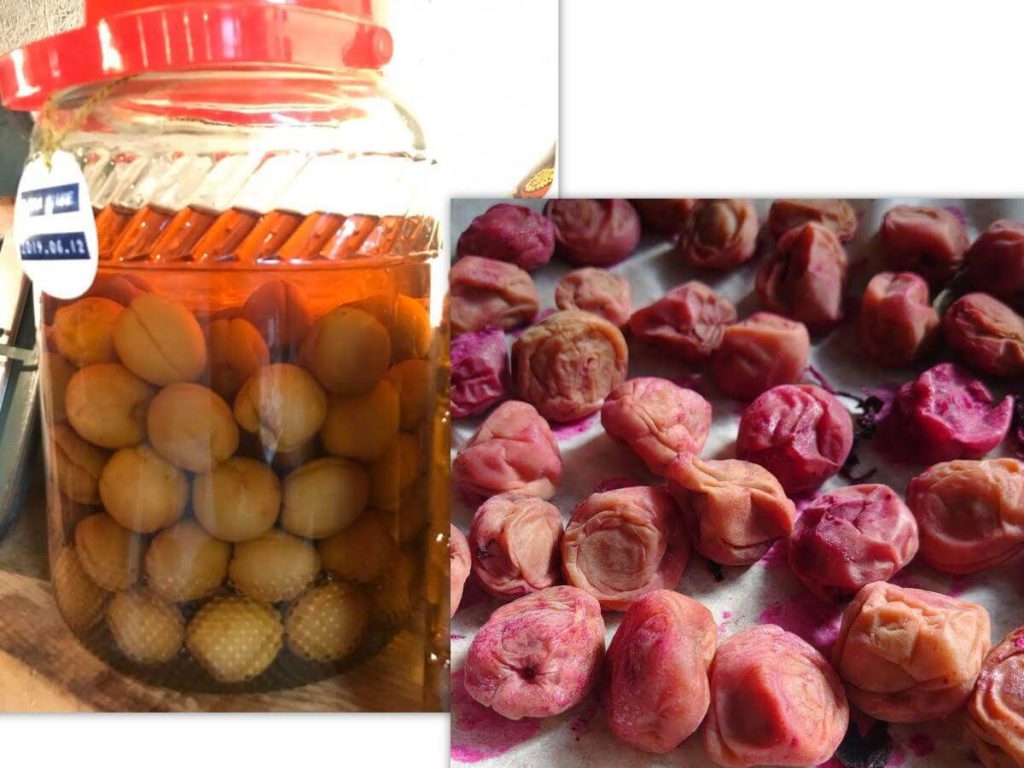
Plums are highly toxic when eaten raw and must be processed before eating. Ume-shigoto refers to the tradition of making homemade preserved foods like “umeboshi (梅干し): pickled plums” and “umeshu (梅酒): plum wine” during the plum season. Plums are harvested around June, during the tsuyu season. By doing ume-shigoto during this time, you can enjoy homemade umeboshi and umeshu throughout the year.
Teru-teru-bouzu (てるてる坊主)
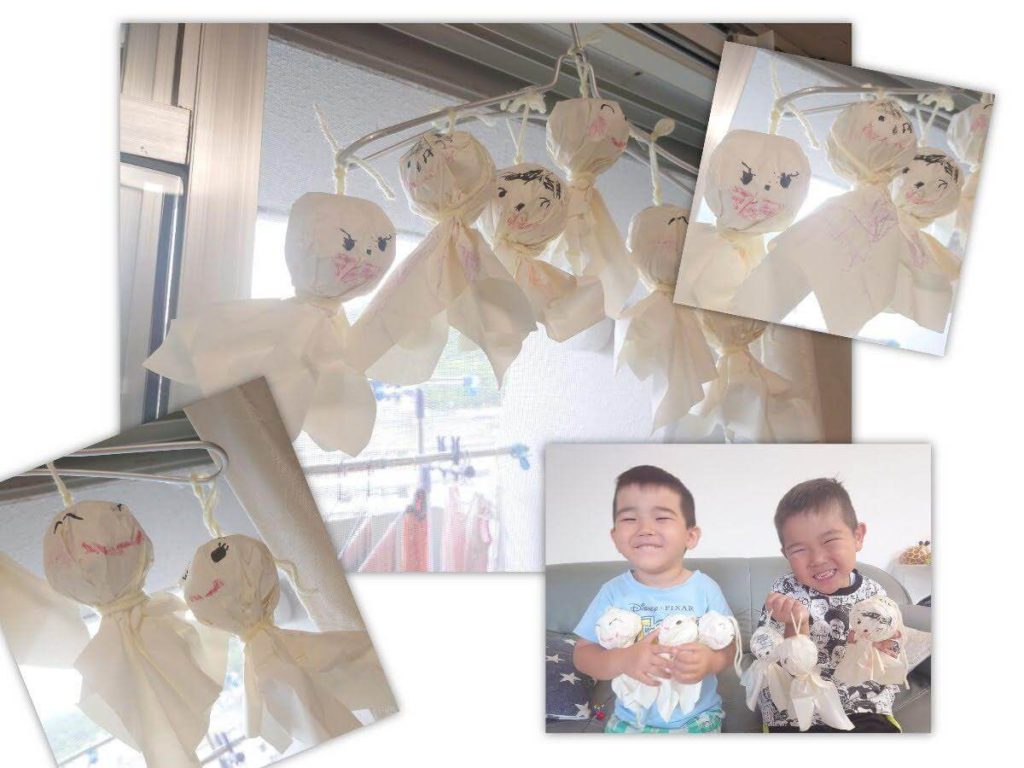
Teru-teru-bouzu, a traditional Japanese charm, is one of the customs you often see during the rainy month of June. It is well known as a charm to ward off rain. That literally means, “teru” means sunshine, and “bouzu” means doll.Generally, it’s made using white cloth, paper, or tissue and it looks like a cute little doll. It’s very easy to make, and people are familiar with how to make it. During this rainy season, at preschools, kids make it by drawing a smiley face on it, and hang it beside the window. Teru-teru-bouzu is hung for hoping for a sunny day, but if you hang it upside down, it means a prayer for rain.
Nagoshi-no-ooharae (夏越の大祓)


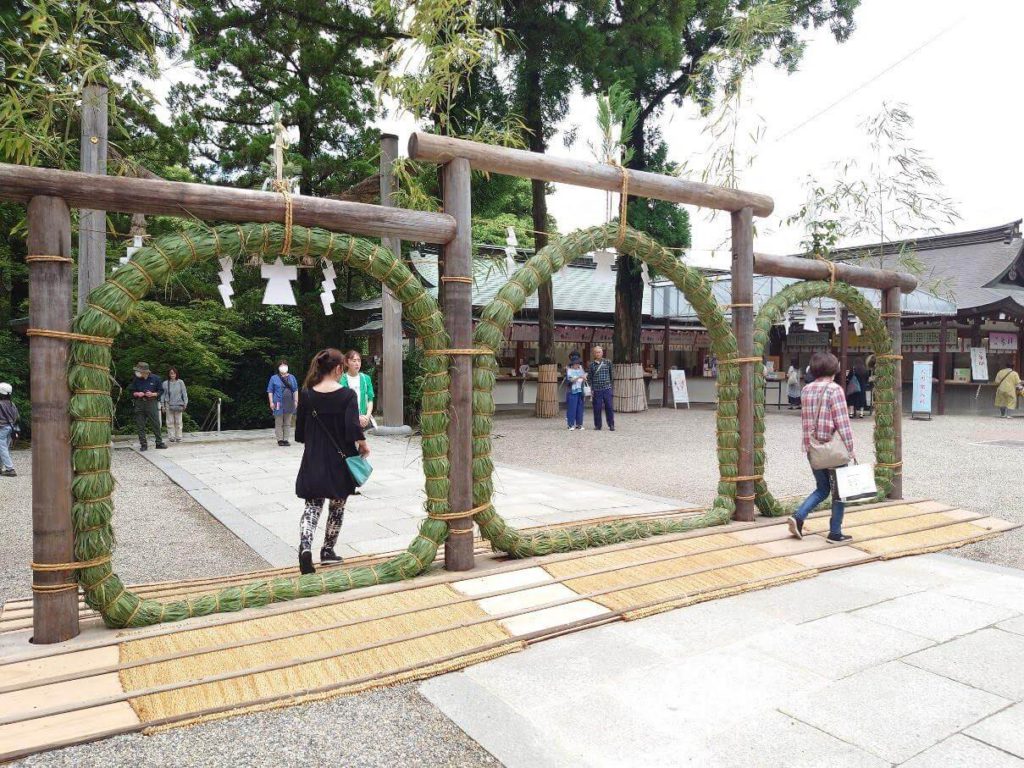

June 30 marks exactly half a year since the New Year, and a Shinto ritual called Nagoshi-no-ooharae is performed on this day. This ritual involves passing through a large ring made of kaya grass, called Chi-no-wa, set up at shrines across the country. By doing so, people get rid of negative energy accumulated in their daily lives and pray for health and safety for the remaining half of the year. Passing through the chi-no-wa not only purifies the body but is also believed to bestow the stamina and energy for getting around the upcoming intense summer heat.
It is considered good to pass through the ring three times in the order of left, right, and left.
Minazuki (水無月) :Japanese sweets

There is a custom that people eat sweets called minazuki on the day of Nagoshi-no-ooharae. These are the Japanese sweets which put sweet azuki beans on uiro, which is a traditional Japanese steamed cake made from rice flour and sugar and cut into triangles. It is said that azuki means purification, and the shape of triangles shows ice which forgets the summer heat.
What did you think of these rainy customs this time? Did you feel the same sensation of harmony with nature that the ancient Japanese felt in their lives? I really love Japanese customs and seasonal events. I’d like to pass them down to the next generations. After reading my article, when you decide to come to Japan in June, you are not unfortunate, but rather lucky!!
I hope you find something to do then. Enjoy the Japanese humid rainy season!!
Below is a link to a previous article I wrote called How to Enjoy Summer. Please take a look there as well.
Let’s Enjoy the Cool Air ~Stay Cool in Japan’s Humid Summer~ –
Thank you for reading to the end! See you next time.
I’m a clay artist, and a master of Japanese calligraphy “Onore-sho”. I have my own shop in Ikaruga town, Nara, which is near Horyuji temple: world heritage site. And I’m a volunteer English tour guide. I enjoy learning English everyday.

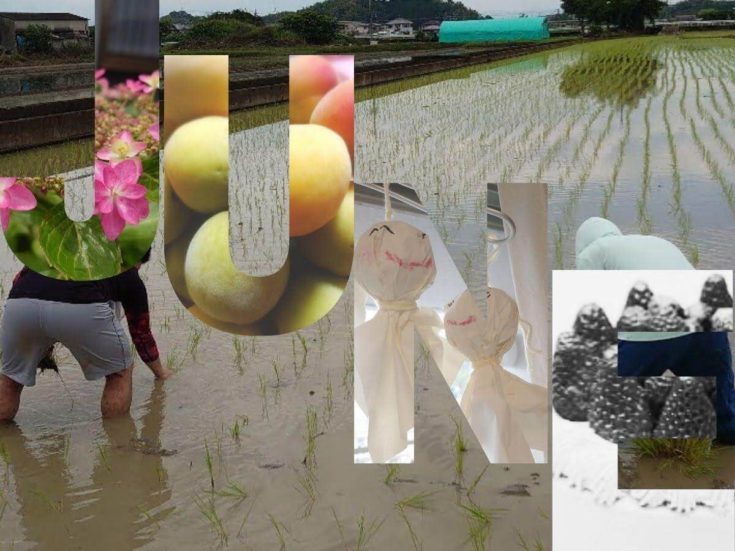



 HTJ has a YouTube page! Check it out
HTJ has a YouTube page! Check it out
Chisato! What an amazing article. I loved the photos here too, and the audio is great! The minazuki looks so good… I need to try it!
Hi Chisato,
OH….MY….GOD! Who are those two ADORABLE CUTIES????!!!! They must be your boys because the UME doesn’t fall far from the tree! ;D
Thank you for your great article. It reminded me of when I planted rice once in Kawanishi-machi (now Tokamachi) in Niigata Prefecture. They didn’t have boots big enough for me, so I worked barefoot. The muddy, creature-filled rice paddy was gross, but at the end of the day I had a newfound respect for the Japanese farmers because my back was KILLING ME! It’s hard work!